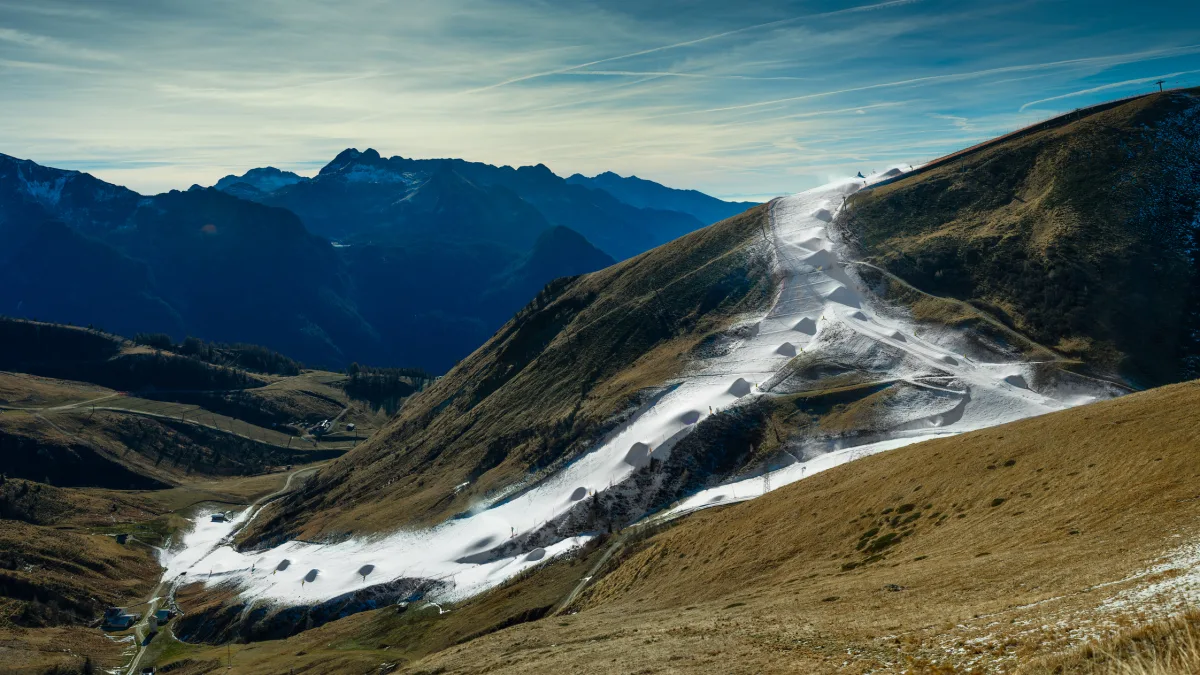The rusting hulks of fishing boats sit marooned in what was once the Aral Sea, their keels now embedded in salt-crusted sand rather than lapping waves. These spectral vessels, scattered across the Aralkum desert, bear witness to one of the 20th century’s most staggering environmental catastrophes—the death of the world’s fourth-largest lake.
Though very much an entirely human phenomenon, the fate of the Aral Sea, which shrank from 68,000 square kilometres to virtually nothing within a generation, offers a sobering preview of a world increasingly gripped by drought. What began as Soviet agricultural ambition in the 1960s—diverting the Amu Darya and Syr Darya rivers to irrigate cotton fields—ended with the collapse of an entire ecosystem and the livelihoods of 3.5 million people.
The new normal
According to a new report from the Organisation for Economic Co-operation and Development (OECD), the global land area affected by drought has doubled in the last 120 years, whilst the economic costs of drought, which, on average, have at least doubled since 2000.
More ominously, an average drought in 2035 is projected to cost at least 35 per cent more than it would today.
The numbers paint a picture of a planet under mounting water stress. Some 40 per cent of the planet has experienced more frequent and intense droughts in recent decades due to climate change and human activity.
Under a four-degree warming scenario—a trajectory the world remains dangerously close to—droughts could become seven times more frequent and intense while occurring alongside other extremes such as heatwaves and wildfires.
Economic drought
The financial toll is already staggering. Globally, agriculture is the most affected sector, with crop yields declining by as much as 22 per cent during the driest years. This impacts supply chains, insurance markets, and government budgets with ruthless efficiency.
The OECD’s report highlights that the growing effects of drought are fuelled by multiple compounding factors, including deforestation, urban development, unsustainable farming and human-amplified climate change. This convergence of pressures transforms what were once manageable dry spells into economic catastrophes.
The United States offers a worthwile case study. Since 1980, drought and related crop failures have cost the American economy 249 billion US dollars, with several hundred billion US dollars in losses over the entire 20th-century. Australia, India, and other major agricultural producers have faced similar devastation.
The human cost
Beyond balance sheets, drought exacts a profound human toll. The World Economic Forum reports that droughts were the deadliest natural disaster globally between 1970 and 2019, killing 650,000 people despite representing only 15 per cent of natural disasters. Currently, 2.3 billion people—about a third of the world’s population—face water stress, a figure expected to double by 2050.
The Aral Sea’s former fishing ports tell this story in miniature. Commercial fishing catches plummeted from 43,430 tonnes in 1960 to zero by 1980 as salinity levels soared. The ports of Aral in the northeast and Mŭynoq in the south, once bustling centres of commerce, now sit stranded miles from the water’s edge.
Health impacts followed swiftly. Anemia cases increased twentyfold compared to 1960s statistics, whilst respiratory and intestinal ailments became endemic. The collapse forced a partial depopulation of areas along the lake’s former shoreline, with many residents abandoning homes that had sustained their families for generations.
Policy prescriptions
Effectively addressing the escalating drought threat, according to the OECD, requires a coordinated global response and decisive, proactive action from stakeholders. The organisation’s recommendations span technological innovation, policy reform, and international cooperation.
Building more efficient irrigation systems could significantly reduce global water use and expanding the number of drought-tolerant crops can help mitigate drought impacts and strengthen long-term climate change resilience. The report also emphasises the need for integrated water management, cross-sectoral action, investment in prevention rather than response, improved governance and data systems, and enhanced international cooperation.
Some regions offer glimmers of hope. Kazakhstan’s construction of the Kok-Aral Dam in 2005 helped revive the North Aral Sea’s water levels by 12 metres by 2008, enabling some fishing to resume. The project demonstrates that even severely degraded systems can begin to recover with sustained intervention and political will.
A drier tomorrow
Nevertheless, the scale of the challenge ahead dwarfs such local successes. By 2050, drought could affect more than 75 per cent of the world’s population, with 4.8 to 5.7 billion people living in areas with water shortages for at least one month annually. As many as 216 million people could be displaced from their homes at least partially due to prolonged dry weather.
The OECD’s analysis underscores an uncomfortable truth: drought is shifting from a periodic natural hazard to a persistent economic and social challenge. The transition demands a fundamental rethinking of how societies manage water, plan agriculture, and prepare for climate uncertainty.
Back in what remains of the Aral Sea basin, the lessons are written in salt and rust. The skeletal fishing boats serve as monuments to humanity’s capacity for environmental destruction—but also as urgent reminders of what awaits if the world fails to heed the early warnings.
As former UN Secretary-General Ban Ki-moon observed after visiting the region back in 2011, the Aral Sea’s fate represents “one of the planet’s worst environmental disasters”.
Whether it remains a unique catastrophe or becomes a template for the future may depend on choices made in the next decade.
Photo: Dreamstime.







